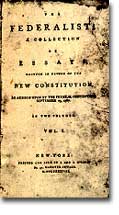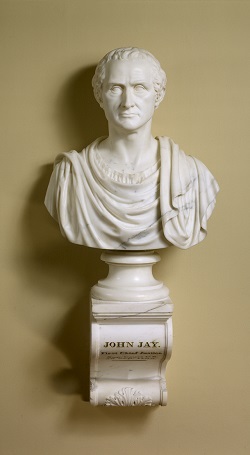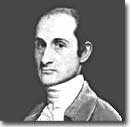16d. After the Fact: Virginia, New York, and "The Federalist Papers"

The Federalist Papers were a series of essays by John Jay, Alexander Hamilton and James Madison written for the Federalist newspaper.
The convention in Virginia began its debate before nine states had approved the Constitution, but the contest was so close and bitterly fought that it lasted past the point when the technical number needed to ratify had been reached. Nevertheless, Virginia's decision was crucial to the nation. Who can imagine the early history of the United States if Virginia had not joined the union? What if leaders like George Washington, Thomas Jefferson, and James Madison had not been allowed to hold national political office? In the end Virginia approved the Constitution, with recommended amendments, in an especially close vote (89-79). Only one major state remained, the Constitution was close to getting the broad support that it needed to be effective.
Perhaps no state was as deeply divided as New York, where the nationalist-urban artisan alliance could strongly carry New York City and the surrounding region, while more rural upstate areas were strongly Antifederalist. The opponents of the Constitution had a strong majority when the convention began and set a tough challenge for Alexander Hamilton, the leading New York Federalist. Hamilton managed a brilliant campaign that narrowly won the issue (30-27) by combining threat and accommodation. On the one hand, he warned that commercial down state areas might separate from upstate New York if it didn't ratify. On the other hand, he accepted the conciliatory path suggested by Massachusetts; amendments would be acceptable after ratification.

America's first native sculptor, John Frazee, was unhappy with the amount of foreign artists doing work for the new Capitol. He was more than happy to do this very classical looking bust of John Jay.
The debate in New York produced perhaps the most famous exploration of American political philosophy, now called The Federalist Papers. Originally, they were a series of 85 anonymous letters to newspapers, which were co-written by Alexander Hamilton, James Madison, and John Jay. Together they tried to assure the public of the two key points of the Federalist agenda. First, they explained that a strong government was needed for a variety of reasons, but especially if the United States was to be able to act effectively in foreign affairs. Second, it tried to convince readers that because of the "separation" of powers in the central government, there was little chance of the national government evolving into a tyrannical power. Instead of growing ever stronger, the separate branches would provide a "check and balance" against each other so that none could rise to complete dominance.
The influence of these newspaper letters in the New York debate is not entirely known, but their status as a classic of American political thought is beyond doubt. Although Hamilton wrote the majority of the letters, James Madison authored the ones that are most celebrated today, especially Federalist, Number 10.

John Jay contributed to the Federalist Papers and was in charge of foreign affairs for the fledgling nation.
Here Madison argued that a larger republic would not lead to greater abuse of power (as had traditionally been thought), but actually could work to make a large national republic a defense against tyranny. Madison explained that the large scope of the national republic would prevent local interests from rising to dominance and therefore the larger scale itself limited the potential for abuse of power. By including a diversity of interests (he identified agriculture, manufacturing, merchants, and creditors, as the key ones), the different groups in a larger republic would cancel each other out and prevent a corrupt interest from controlling all the others.
Madison was one of the first political theorists to offer a profoundly modern vision of self-interest as an aspect of human nature that could be employed to make government better, rather than more corrupt. In this he represents a key figure in the transition from a traditional republican vision of America, to a modern liberal one where self-interest has a necessary role to play in public life.






